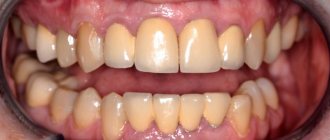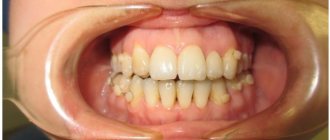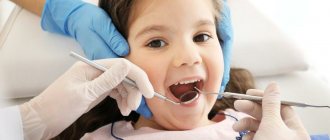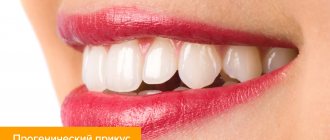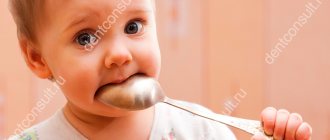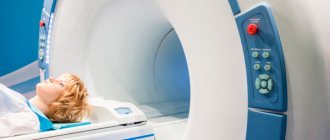Home / Braces
Back
Published: 06/23/2020
Reading time: 6 min
0
32
- 1 What do you need to know about arches for braces?
- 2 Braces scratch your cheek: what to do?
- 3 What to do if the archwire comes out of the bracket?
- 4 What to do to prevent braces from breaking?
- 5 The archwire flew out of the bracket, what should I do?
- 6 What to do?
- 7 If your teeth hurt
- 8 If the diction has changed
- 9 If the design scratches your cheeks or tongue
- 10 If a bracket falls off
- 11 How to insert an archwire into the last bracket
- 12 The tip of the arc has become very long
- 13 Treatment of damage to the oral mucosa.
- 14 Menu during orthodontic treatment
- 15 Expert opinion
- 16 The bracket fell off
- 17 Useful video
- 18 Problems and inconveniences during dental treatment
- 19 Problems with intermaxillary elastics
Braces scratch your cheek: what to do?
For sensitive and suspicious people, the answer to this question will be simple: “Consult a doctor!” But in fact, if braces scratch your cheek, then the intervention of an orthodontist is not always required; the discomfort can be eliminated on your own. Of course, this is only possible in the simplest cases. Let's take a closer look at them
You will have to look at it in the truest sense of the word - armed with a mirror and in good lighting. Calmly and carefully examine your mouth and braces: which part is causing you discomfort? Most often the problems are:
Tips for a patient with braces
Orthodontic treatment is a difficult period: often one or another seemingly small problem seriously overshadows life. Unfortunately, doctors cannot always foresee all the questions that arise, or there is not enough time at the appointment to talk in detail about all the intricacies. This article will help fill in those gaps and make your life with braces easier and clearer. Also, read the answers to the most frequently asked questions.
What to do if the archwire comes out of the bracket?
The arch can protrude and injure the soft tissues in the oral cavity. This can be very painful and only a doctor can help. He will either trim the ends of the arc or replace the structure.
If the wire falls out of the lock, which is not the last one, then you will also need to see a doctor, and as soon as possible. This is necessary because in this case the arch has changed its position and, instead of benefit, can cause harm; the incorrect position of the entire structure will distort the results already achieved and lead to a prolongation of treatment.
The archwire flew out of the bracket, what should I do?
- Most often, thin wires used at the beginning of treatment fly out of the last braces. Experienced orthodontists know how to minimize such phenomena. In particular, the arch can be bent behind the last bracket; in addition, thin arches are often placed only up to the sixth teeth, since they often fly out of the tubes on the seventh teeth. If this trouble nevertheless happens to you, try in front of a mirror using tweezers or nail clippers (just don’t bite off the arch!) to tuck the arch into the tube on the last tooth: this manipulation is akin to threading a thread through the eye of a needle. If you can’t do it or you don’t want to acquire new skills, then contact your orthodontist, he will quickly fix the problem.
- The arch can also shift due to low friction in the system (primarily applies to self-ligating braces). In this case, the archwire protrudes from one side and slides out of the last bracket on the other side. This happens because the orthodontist either forgot to fix the stoppers on the arch, or they turned out to be ineffective for one reason or another. The problem is resolved in the same way as the first point.
- When closing gaps or correcting crowding of teeth, the length of the dentition decreases, but the length of the arch remains the same; accordingly, excess arch length appears behind the last braces. If the tip of the arch is large enough and pricks your cheek, then visit your orthodontist (by prior arrangement, of course), he will remove the excess arch in a couple of minutes. If the tips of the arch are visible, but do not seriously bother you, then do not worry and come to the next scheduled appointment, because this is a sign of progress in correcting the bite.
We suggest you read: Increased intracranial pressure, dry mouth
Main element
It is the arches that perform the main function in straightening the teeth and correcting the bite. Using their force, they pull the teeth to a position in which the arch takes on its original shape.
Here Newton’s law comes into play, which states: “The actions of two material bodies on each other are equal in numerical magnitude and opposite in direction.” This means that the force of the arch is trying to move the teeth into one row.
And the teeth, in turn, resist the braces and try not to budge. But in this situation the arc wins. Thanks to its alloy, it eventually regains its original shape regardless of any deformation.
The arcs differ from each other in their diameter and cross-section. The thinner the section, the thinner the arc itself.
More often, treatment begins with thin arches, since the teeth are just beginning to get used to the braces system and traction. At the end of treatment, the thickest arches (square) are installed, which completely fill the space in the bracket.
According to the cross-sectional shape of the arc there are:
Round arches have the least force on the teeth. They are used at the beginning of treatment.
Rectangular ones with medium traction are used in the spaces between round and square arches. Well, square ones have the greatest resistance and are placed at the last stage of treatment.
What to do?
If you have external braces:
— try to quickly make an appointment for an unscheduled appointment; - if you wear intermaxillary elastics, then stop wearing the elastics until the bracket is glued.
If you have internal braces:
— try to quickly make an appointment for an unscheduled appointment; - if you wear intermaxillary elastics, then stop wearing the elastics until the bracket is glued; - do everything so that the bracket does not get lost; - if this is a bracket on the last tooth, and the arch is not bent behind the bracket, then try to very carefully remove it from the arch and save it. If the bracket does not come off, do not apply any force; you may damage the adjacent bracket. Leave it in place, it won't get lost.
Are your braces rubbing? Orthodontic wax will help.
If any element of the braces system rubs on you, seal it with orthodontic wax . Usually it is given by the orthodontist after fixing the braces. In addition, you can use regular dental wax in red strips; it is not so flexible, so it must be preheated in hot water. From wax of any type, after heating it, you need to make a ball the size of a match head to a pea and attach it to the dried surface of a bracket, hook or other element of the bracket system.
Method of applying wax to brackets.
If your teeth hurt
a) After installing braces, in the first 3-4 days you will experience pain only when biting or chewing food. It happens that teeth hurt for up to 10 days (very rarely). Sometimes there may be no pain at all, this is also normal.
b) After activation (control visit), during which the arch was replaced, the tooth/teeth may ache for 1-2 days, but also only while eating. Rarely do any patients resort to using painkillers these days, but if you feel the need for this, take those painkillers (ketanov, Nurofen, Nise, etc.) that you have on hand.
c) During the procedure for removing braces, the patient experiences slight discomfort (but it lasts 1-2 minutes) AND THAT’S ALL. THERE WILL BE NO OTHER PAIN SENSATIONS.
Proper care and hygiene
One of the main stages in wearing braces is proper care of the system itself for correcting teeth and the oral cavity. Often problems arise precisely because of improper oral care.
Cleaning your braces should become a habit after every meal, as food can accumulate in the smallest crevices between the bracket and the wire. The consequences of such accumulation may be the development of bacteria that will begin to cover the gums and teeth.
They can also affect the braces system itself. Therefore, before installation, the doctor tells the patient what can and cannot be done when wearing braces.
There is food made from hard fibers (otherwise the arch may fly out of the sinus or the bracket itself may come off). Eat coloring foods (all kinds of foods with bright dyes). Loosen teeth and braces. Do not eat foods that stick to teeth and braces (chewing gum, taffy, etc.).
You might be interested in an article about how much braces cost.
Read about the correct bite in humans in this article.
Use a special brush with indentations for braces (most often the doctor himself gives it to you, but you can buy it yourself). If there is discomfort, use warm wax (specially given by the doctor in case the arch or bracket will injure the gums). Use a special brush-brush that helps clean hard-to-reach areas between the arch and teeth. Use mouthwashes (they help restore and maintain oral microflora and clean the braces).
By following these rules, the braces system will last longer and will not cause discomfort.
How to replace the arch on braces, see the following video:
If the diction has changed
Diction may change slightly only with lingual (internal) braces. With the new miniature lingual braces INCOGNITO, there is virtually no impairment of diction. But if you still encounter a similar problem, short-term exercises with ditties and tongue twisters will help restore your eloquence:
There is firewood in the yard, the gang is on the firewood, the gang has grass, all the gang are used for firewood. Karl stole dollars from Clara, and Clara stole the quarterly report from Karl. The workers privatized the enterprise, privatized it, but did not privatize it. The beggar rustles in thousands and fifty thousandths. The highest echelons marched towards their sponsored people along the highway, drunk.
Regulators regularly adjusted the regulators. It is not clear whether the shares are liquid or not. Taxable grace. The guru's inauguration went off with a bang. The exhibitionist has small biceps. The moron got into the habit of doing bodybuilding. Sasha herself is perfection, and she’s also improving herself!
Unpromising. In Kabardino-Balkaria, valocardine is from Bulgaria. De-ideologized, de-ideologized, and pre-ideologized. He who does not work does not eat what he who works eats. Turner Rappoport sawed through the pass, rasp and support. Coconut cookers boil coconut juice in coconut cookers.
The eyes of a gazelle were staring at her from behind the spruce tree. Underqualified. Sasha walked along the highway and sucked on a dryer. Senya is carrying hay in the canopy, Senya will sleep in the hay. The cap is not sewn in the Kolpakov style, the bell is not poured in the Kolokolov style, the cap needs to be re-packed, re-capped, re-forged, re-capped. The heron wasted away, the heron was withered, the heron was dead. From under the Podvypodvert
After 3-4 days of training, your diction will become even better than before installing braces.
If the design scratches your cheeks or tongue
The first thing you should do is pick up a mirror and look at your teeth in bright light - you need to try to understand which part scratches the mucous membranes of the mouth. During the first couple of weeks, the not quite straight edges of the braces often scratch or rub your lips, tongue and cheeks - this is considered normal. If such rubbing bothers you greatly, then use a special protective wax. Remember that waxing will take longer to get used to your braces.
Special protective wax
Sometimes the tail from the metal ligature begins to scratch the cheek. In general, ligatures are bent towards the teeth and should not interfere, but due to active brushing of teeth, their tails sometimes bend. In this case, you don’t always need to run to the dentist - you can carefully bend the tail of the ligature under the arch yourself, using a toothpick for this.
We invite you to familiarize yourself with Irrigator
If a brace falls off
Why do braces fall off, reasons?
1. When chewing or biting off hard food. 2. If you try to pick out something stuck under the archwire or between the braces on your own. 3. If the teeth have changed their position and there is contact of any tooth with the brace of the opposite jaw. If you do not notice this and do not tell the doctor about it, then, most likely, the braces will fall off as soon as you eat or when you force your teeth together.
Often in such cases, the patient does not immediately detect this problem. And to his surprise, while brushing his teeth or the next day, he identifies a lock that has fallen off, for a reason unknown to him.
How to insert an archwire into the last bracket
In patients, the archwire can often fly out of the last bracket, for example, while eating. In this case, you can insert it back yourself.
The lock on the last bracket never opens, so the part that came out will need to be inserted. Bend it strongly and carefully insert it into the hole in the bracket lock (similar to threading a needle), using tweezers. If the arch is too rigid, you will need the help of another person, as a lot of force will be required.
Important! If you are unable to replace the arch on your own, you should contact an orthodontist at your nearest dental clinic. The specialist will very quickly restore the functionality of the braces system.
If the piece that came out could not be inserted and it began to rub, orthodontic wax will help in this case.
Why does the bracket come off the tooth?
There may be several reasons why braces come off:
- — excessive pressure of the power arc on the teeth;
- - excessive use of force during care of the braces system;
- — refusal to use special tools for cleaning the system;
- - consuming too hard, sticky or viscous products, including chewing gum. Read our article: “what you can and cannot eat with braces”;
- - low-quality composition used to fix clasps on teeth;
- — failure by the orthodontist to adhere to the technology of attaching the bracket to the tooth surface;
- - mechanical impact on teeth, for example, impact.
Unsticking of braces is a fairly rare occurrence, provided that the dentist performs high-quality work and the patient follows the doctor’s recommendations. The orthodontic studio of Leonid Gorbunov employs experienced specialists who guarantee reliable fixation of the clasps on the teeth.
The tip of the arc has become very long
After wearing braces for a while, you may feel that the end of the archwire suddenly moves out of the last locks and digs into your cheek. However, this is a good sign. It means your teeth are starting to straighten. The arc becomes smoother, and therefore longer. You won’t be able to deal with this on your own: if the tip of the arc extends more than 3 mm, go to the clinic - they will simply cut it off.
All of the above inconveniences can occur both when wearing inexpensive metal braces and when using more aesthetic Damon braces. Expensive modern braces (for example, lingual) also do not exclude this possibility.
How to install correctly
Most often, the patient does not install the arch himself. This is done by an orthodontist who has sufficient skills to fix the arch .
To begin with, he adjusts the size of the arch to the size of the jaw, since it is much longer than our oral cavity. The unnecessary part is cut off with scissors, and the arch is completely placed in the dentition.
Then, using rubber rings, the arch is inserted into the sinuses of the braces of the last and penultimate molars (large root teeth in the depths of the cavity that perform a chewing function. There can be 3 of them on each side: the first, second and third) and secured with round rubber bands (ligatures).
They hold the archwire tightly and prevent it from jumping out of the bracket. Sometimes, after fastening, the doctor can move the arch in different directions in order to best fix it and not injure the inner palate.
Treatment of damage to the oral mucosa.
During orthodontic treatment, the lips and mucous membranes of the cheeks and gums inevitably suffer. Sores are formed due to friction between braces, especially their hooks, and soft tissue in the mouth. This problem is especially acute at the beginning of treatment.
- The wounds need to be lubricated with Solcoseryl dental gel (sold in pharmacies) - it significantly speeds up the healing of mucous membranes, and you can also lubricate the corners of your lips with it, especially after taking it. In addition, lips can be lubricated with Solcoseryl ointment.
- Rinse your mouth with salt water. Salt water reduces pain and speeds up healing of wounds. Mix a tablespoon of regular table salt in a glass of warm water. Place the resulting solution in your mouth and hold for about a minute. Repeat this procedure several times a day, especially in the first days after fixation and at times when the pain intensifies.
- Diluted hydrogen peroxide is an antiseptic, so it can reduce inflammation in the oral cavity and speed up the healing of the mucosal epithelium. Mix water with three percent peroxide 1 to 1. Place the solution in your mouth and hold it there for a minute. Repeat several times a day.
Menu during orthodontic treatment
After reading the list of restrictions above, you are no doubt wondering, “So what can braces bearers eat?” In fact, the list of dishes is very large, you just need to show a little imagination and follow the recommendations above. I will list only a small part of the recommended dishes so that you can get new ideas for culinary experiments during orthodontic treatment.
- Pasta, spaghetti, ravioli and so on. With cheese, various sauces and other additives there is a huge scope for creativity.
- Mashed potatoes or soft baked potatoes
- Many rice dishes with vegetables or seafood
- Various types of cutlets and dishes using minced meat
- Dumplings and dumplings
- All types of cereals
- Pies and similar baked goods (without a hard crust) with almost any variety of fillings, except nut
- Various seafood dishes (not hard)
- Various types of cheeses
- Dishes made from jelly or creams
- Smoothies and milkshakes
- Yogurts and cottage cheese with various additives
- Bananas, grapes, melons, watermelons, kiwis, strawberries and other soft fruits and berries
We invite you to familiarize yourself with Ceramic or sapphire braces: differences and which is better
The above dishes are especially suitable for the beginning of treatment (especially in the first couple of weeks after bonding), when the teeth may become sore when biting on them. In the future, you can add more solid products from the second list (necessarily, cutting into small pieces).



